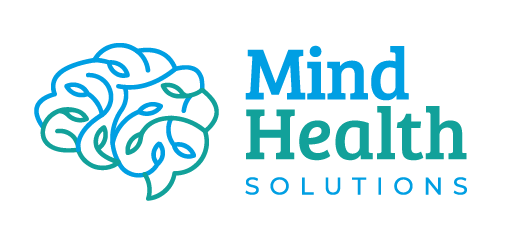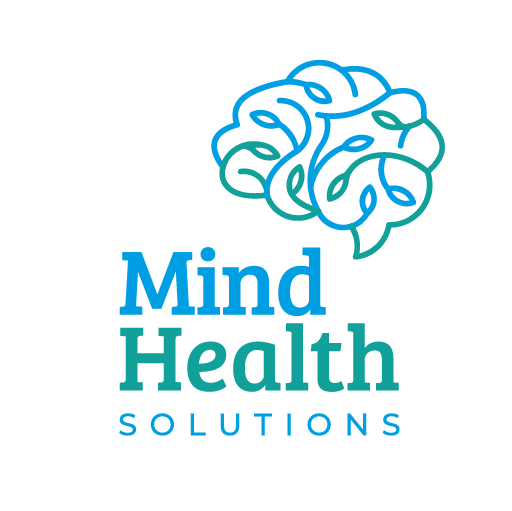Using person-first, non-stigmatizing language is crucial to overcoming biases and providing better treatment by Tori DeAngelis
DeAngelis, T. (n.d.). Fighting stigma by mental health providers toward patients. https://www.apa.org. https://www.apa.org/monitor/2024/07/stigma-against-patients

Why it happens
In some respects this phenomenon is understandable: Providing good mental health care can be challenging, and dealing with difficult patient symptoms and high levels of need can fuel provider stress. That stress is compounded when psychologists work in settings with high caseloads and low institutional support. To underscore the point, APA’s 2023 Practitioner Pulse Survey found that during and since the Covid-19 pandemic, many psychologists said that patients are entering treatment with more severe symptoms and staying longer, and 36% of those surveyed said they felt burned out as a result.
But holding these negative views, whether overtly or covertly, is not good for patients, providers, families, or the public. Studies show that patients pick up on provider stigma and it can lead to feelings of marginalization, treatment dropout, and failure to enter treatment in the first place. In a survey of 350 mental health service users, those who felt that providers held negative attitudes toward them were more likely than others to feel disempowered, a perception linked to internalized stigma (Wang, K., et al., Psychiatry Research, Vol. 259, 2018).
Meanwhile, a literature review headed by Claire Henderson, PhD, of King’s College London points to specific provider behaviors that patients perceive as barriers to recovery. These include being overly controlling about the kinds of treatment patients receive, having low expectations for treatment success, and displaying “protective benevolence”—treating patients like children, for example by withholding important treatment information because the provider thinks it may hurt their feelings. Conversely, providers who are seen as understanding, dependable, reliable, open, and honest help facilitate recovery, according to patient reports (The Lancet Psychiatry, Vol. 1, No. 6, 2014).
Perhaps not surprisingly, mental health providers stigmatize some disorders more than others, research also finds. Conditions with the highest associated bias include schizophrenia (Valery, K.-M., & Prouteau, A., Psychiatry Research, Vol. 290, 2020), borderline personality disorder (Knaak, S., et al., Borderline Personality Disorder and Emotion Dysregulation, Vol. 2, No. 9, 2015), and substance use disorders (Earnshaw, V., American Psychologist, Vol. 75, No. 9, 2020). This bias often appears in the language used to describe people with these conditions, Nauphal commented.
“Calling someone with borderline personality disorder ‘manipulative’ or ‘attention seeking,’ or using terms like ‘an addict’ or ‘a schizophrenic,’ are all ways we use dehumanizing language that also makes assumptions about people’s character and motives,” she said.
Tackling the problem
There are many ways psychologists can help reduce patient-related stigma, whether internally, within their professional settings, or in the community at large, according to psychologists who study these forms of stigma. Here are some suggestions:
Take a personal inventory
Improving your awareness of the problem is a good start, these psychologists said. Consider your own internalized and sometimes unconscious biases about mental illness, how the need to fit in with your colleagues may lead you to talk in certain ways about patients, and most importantly, how stigma affects patients. For some, there may also be the lurking issue of self-stigma: If you have a lived experience of mental illness yourself, it can be difficult to bring it up for social and professional reasons, which in turn can affect your mental health and that of your patients (see “Psychologists with mental health conditions may face discrimination” in the June 2024 Monitor). In fact, many of us struggle with emotional and psychological issues, and it is unhelpful to treat patients as if they are the only ones who experience such difficulties, said Andrew Devendorf, a graduate student at the University of South Florida who is doing his internship at the Veterans Affairs Puget Sound Health Care System in Seattle.
“Instead of having the attitude that, ‘I’m a psychologist; therefore, I don’t experience these things,’ I think we should share with patients that we’re human beings who also experience these things, and we know it can be difficult,” said Devendorf, who studies mental health stigma within the profession. “Patients are better able to identify with that kind of attitude than with the traditional power dynamic that’s gone on.”
A potent way to combat stigma on an individual level is simply to change the way you talk about patients with colleagues and otherwise, Kelly added. In a randomized study he led, the team found that in vignettes where a person was labeled a “substance abuser,” participants viewed that person as a greater social threat, more likely to act out in negative ways, and more deserving of punishment than a person labeled as “having a substance use disorder” (International Journal of Drug Policy, Vol. 21, No. 3, 2010). In general, Kelly recommended using person-first, nonstigmatizing language such as “a person with a substance use disorder” rather than “a substance abuser,” as well as language that describes a person’s behavior rather than their overall character.
“There is something about language that can evoke these implicit biases towards individuals,” he said, “so it’s important to be careful about how we talk about our patients.”
Learn new care methods
If you have not done so already, consider getting training in care models that are person centered, strength based, and recovery oriented. Such approaches—which help patients set and pursue their own goals and work collaboratively with providers to develop skills to live, learn, and work in the community—view patients as autonomous human beings rather than as illnesses to be treated. That is to say not that medical approaches should be eliminated, but that the two can complement one another (see, for example, Duckworth, K., National Alliance on Mental Illness Blog, April 10, 2015).
This newer philosophy also recognizes that while recovery is a journey that is not always linear, it is possible for people with mental illness to gain greater health and even recover entirely, said Patrick Corrigan, PsyD, Distinguished Professor of Psychology at the Illinois Institute of Technology in Chicago and a seminal researcher on stigma. “Everything is not automatically a failure, a downhill course, and gloom and doom,” as he put it. Indeed, research is starting to show that these approaches can promote optimism, empowerment, and recovery (Warner, R., The Psychiatrist, Vol. 34, No. 1, 2010).
Getting trained in relevant skills can also help reduce stigma by increasing provider confidence, comfort, and understanding of specific conditions, research finds (Knaak, S., et al., Canadian Journal of Psychiatry, Vol. 59, No. 1, 2014). In addition, “understanding the true nature of a particular condition can help to increase compassion,” Kelly noted.
Educate others
Another way to make a positive difference is to train and educate others, said Cassie Boness, PhD, a research assistant professor at the University of New Mexico who studies stigma related to substance use disorders.
For example, she serves as medical codirector of an online telementoring program called Project ECHO (Extension for Community Healthcare Outcomes), where she talks with psychologists, physicians, and other health care providers about the latest research and best practices for working with people who use substances as well as how to avoid stigmatizing them.
In those discussions, she debunks the prevalent myth that people with substance use disorder rarely recover and that true recovery can only occur with complete abstinence. “Actually, a lot of research tells us that people do get better and achieve recovery, and that most people achieve recovery without formal treatment,” she tells participants. She also suggests how providers might apply these findings to their clinical work: If they are aware that recovery is possible and take a more optimistic approach to treatment, patients will feel it and have more hope themselves. In turn, these attitudes can help support treatment success and lead to less provider burnout, she said.
In a similar vein, Stephen P. Lewis, PhD, a professor of psychology at the University of Guelph in Ontario, Canada, employs various outreach activities related to nonsuicidal self-injury (NSSI), his area of study. These include TED Talks where he shares his own lived experience with self-injury, depression, and trauma.
“I really try and break down some of the barriers and challenge canonical discourses around NSSI and what people think about when this topic comes up,” Lewis said.
Psychologists can also get involved in antistigma advocacy activities—a potent way to tackle the problem, Nauphal said. Within the field, that may include developing and disseminating stigma-specific trainings, uplifting the voices of psychologists with lived experience of mental illness, and committing to a lifelong practice of becoming aware of and unlearning internalized biases, for example. In the policy arena, it may involve advocating for system-level changes aimed at addressing the sources of bias.
“A lot of mental health problems are not individual problems; they’re system-level problems,” she said. “We can’t understand and treat mental health if we don’t also work to dismantle systems that perpetuate mental health difficulties.”
Design and test interventions
In a general sense, research finds that antistigma interventions that incorporate education, involve interactions with people who have lived experience with mental illness, and take a long-term approach to intervention have the greatest chances of success (Carrara, B. S., et al., International Journal of Social Psychiatry, Vol. 67, No. 7, 2021).
Psychologists, thanks to their expertise in research design, are in a prime position to craft such efforts, Kelly said. “When you educate people about the nature of a condition, when you teach them to talk and think about it differently, and when you expose them to individuals who have the disorder, it starts to improve patient engagement and retention,” he said.
An example is a project underway at the University of Bordeaux in France, where psychologists Kévin-Marc Valery, PhD, and Antoinette Prouteau, PhD, are developing an antistigma intervention for mental health providers, part of a larger research program called STIGMApro.
To design the project, the team convened a committee of mental health professionals, patients, relatives, public funders, field experts, and researchers in psychology and public health, who developed a range of studies to identify practices associated with reduced stigma toward patients in mental health workplaces. Those practices included using recovery-oriented principles, implementing institutional cultures that highlighted the similarities between professionals and patients, and supporting group-designed projects involving professionals, patients, and families (International Journal of Psychiatry in Clinical Practice, Vol. 27, No. 2, 2023). The committee then incorporated those elements into the intervention, which included six sessions attended by 8 to 12 mental health professionals along with professional peer helpers, patients, and family members. It is now being tested in a multisite randomized controlled trial comparing the intervention with stigma training as usual.
Full patient participation was an essential part of the effort, Valery underscored.
“Stigmatizing practices have harmful consequences for patients, including worsening of symptoms, lower self-esteem, less hope, poorer functioning, and less adherence to care,” he said. “None of us entered the field to do that. So it is vitally important that we combat this tendency in the service of our patients’ mental health and well-being.”


